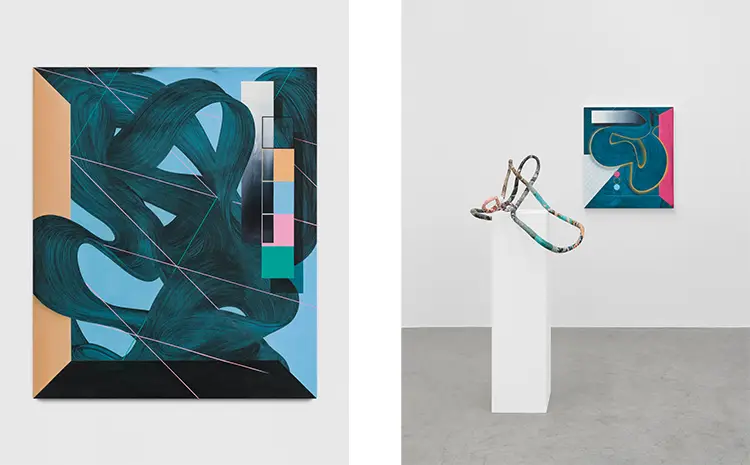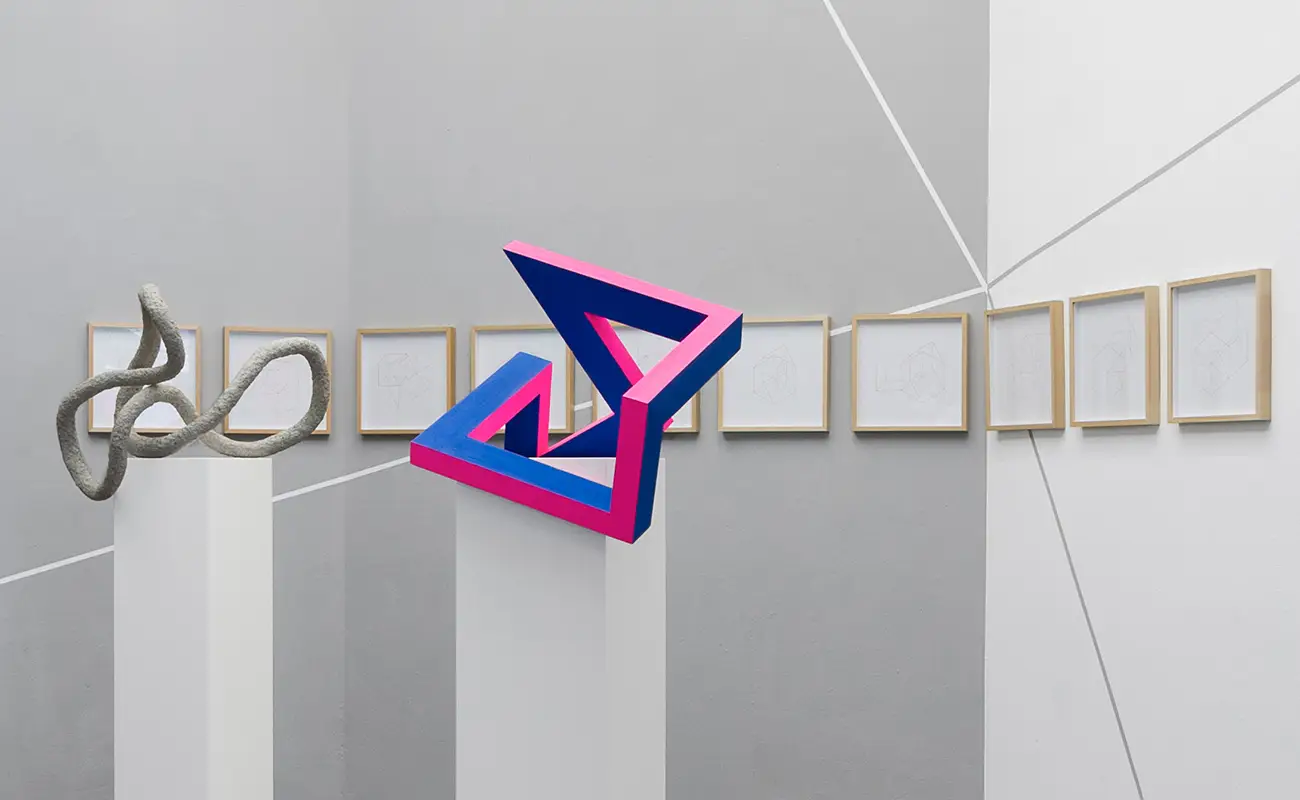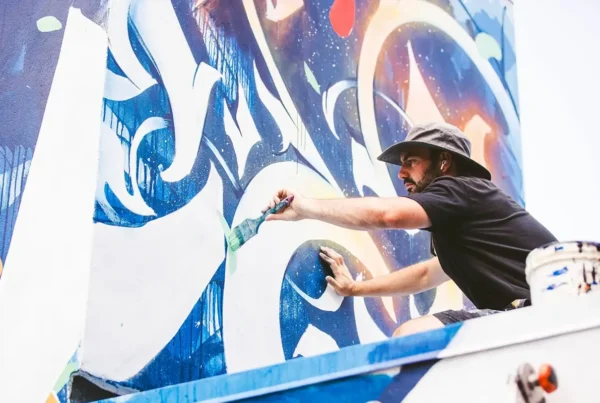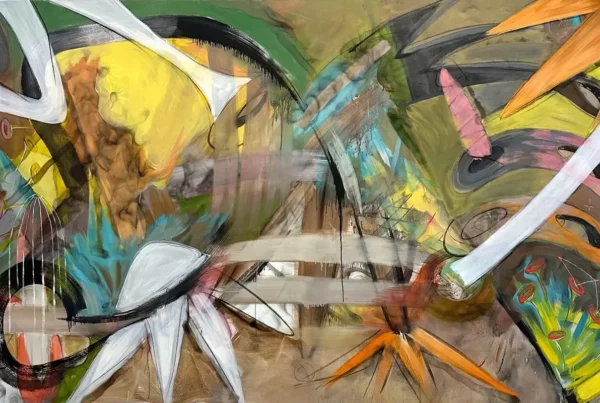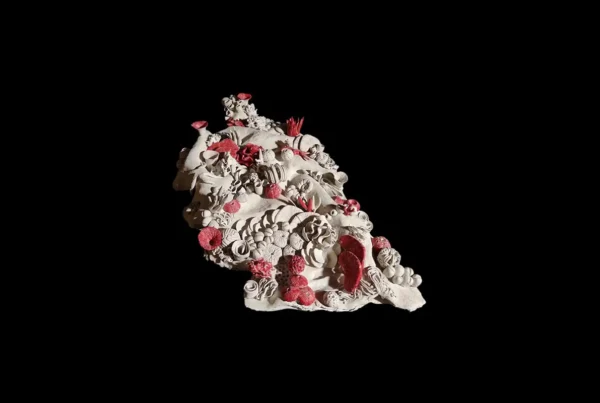Photo credits: Trevor Good
“Abstraction allows for greater possibilities of free association and cryptographic visual communication.”
Unbound by Dimension: Where Sculpture Meets Philosophy
Christopher Sage’s artistic identity thrives on the fusion of disciplines and dimensions. Bridging painting, printmaking, and sculpture, his practice often manifests in immersive installations marked by sharp geometry and conceptual ambition. Educated first in sculpture and installation under Bill Culbert and Ron Haseldon, Sage later transitioned into painting during his postgraduate studies under Professor Stephan Buckley at the University of Reading in 2009. That same year, his move to Berlin catalyzed a new chapter of exploration, where his works would span not only mediums but also cultural contexts. This interdisciplinary foundation informs an approach that resists categorization and celebrates contradiction, inviting audiences into spaces both visual and philosophical.
Sage’s intellectual appetite finds a natural outlet in visual abstraction. Inspired by an early interest in drawing and the art history tomes scattered through his childhood home, he recalls hours lost in reproductions of Picasso and Cézanne, which seeded his fascination with visual language. His encounter with grand-scale works during a formative visit to Tate Britain only deepened this curiosity. In later years, participation in artist collectives in Bristol and co-organizing exhibitions in nontraditional venues nurtured his collaborative instincts and independent spirit. The lack of local project galleries led Sage and peers to transform disused spaces into vibrant cultural hubs, experiences that have clearly influenced his ongoing collaborative curatorial work in Berlin.
The philosophical undercurrent running through Sage’s practice adds complexity to his visual strategies. He routinely investigates concepts drawn from metaphysics, language, and scientific theory, all woven into his reflections on human perception. His university years included auditing philosophy seminars, where he encountered thinkers such as Descartes, Plato, and Hofstadter. These figures sparked a lifelong inquiry into how belief systems shape knowledge and experience. This layered perspective on reality translates into artworks that are not just visual artifacts but vehicles for contemplation—conceptual frameworks clothed in form and color, continuously questioning the rules of understanding.
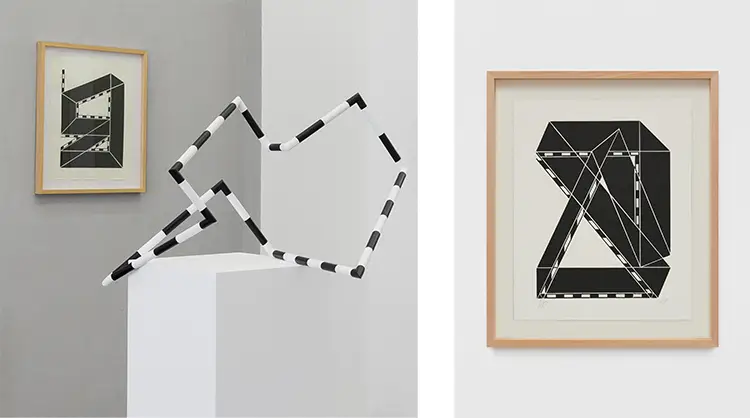
Christopher Sage: Visual Grammar in Flux
Sage’s style is characterized by an intentional resistance to static definition. Drawing from a variety of knowledge systems—ranging from the theological to the quantum—his artworks explore how disparate concepts coexist within the psyche. His paintings often merge conflicting perspective strategies, twisting spatial norms and bending viewer perception. These pieces do not aim for mimetic realism but rather function as visual thought experiments. By rejecting a singular vanishing point, Sage subverts traditional spatial logic, encouraging the viewer’s eye to traverse multiple interpretative layers simultaneously. His crystal sculptures, with their fragmented surfaces and color-play, extend this conversation into three dimensions, rewarding movement and curiosity.
Central to his practice is the use of prime numbers to dictate proportion and form. Unlike the harmonious predictability of the Golden Ratio, primes introduce irregularity and surprise, structuring the work with a logic that exists beyond visual symmetry. This mathematical underpinning reveals itself not as cold calculation, but as a poetic constraint—an unseen scaffolding that guides the visual composition. In Sage’s hands, numerical structure becomes a dynamic partner in the creative process, allowing for calculated dissonance and measured chaos. This is particularly evident in how he balances bold, swirling brushwork with the rigid geometry of lines and forms, achieving a dialogue between intuition and intellect.
“Speaking in Tongues,” one of Sage’s pivotal sculptures, exemplifies his aesthetic philosophy. Composed of eleven angular arms built on prime-numbered lengths, the sculpture dances between structure and flux. At first glance, it recalls intersecting speech bubbles—an homage to language and its breakdowns. Yet the bands of color that wrap around its form were born from months of experimentation with pattern and repetition, mimicking the rhythm and cadence of glossolalia. Its unpredictable contours evoke both a playful childhood memory of a plastic toy snake and the mystique of divine language. In this work, Sage captures the tension between form and spontaneity, language and nonsense, logic and feeling—core themes that ripple throughout his oeuvre.
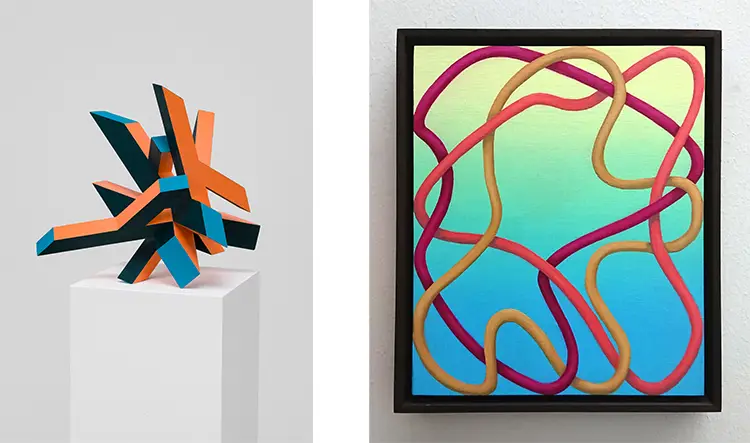
The Architectures of Curiosity
Inside Sage’s studio, the process mirrors the complexity of his finished works. The space functions not just as a workshop but as a living archive, lined with expanding folders filled with reference materials, sketches, and visual research. These resources, ranging from printed media to hand-drawn studies, are routinely rotated on the studio walls, allowing for a shifting constellation of visual stimuli. Such a system facilitates spontaneity, encouraging connections between seemingly unrelated ideas. His studio is a dynamic environment—an extension of his mind where works evolve at different speeds, layered through periods of reflection and reassessment.
This multiplicity is integral to his method. Rather than following a linear progression from concept to completion, Sage maintains several works in motion simultaneously. This allows him to shift focus as needed, avoiding creative stagnation. The strategy resembles managing multiple chess games at once, requiring both intense focus and an overarching awareness. If a piece reaches an impasse, he temporarily redirects his energy to another, maintaining forward momentum. A daily action plan helps him structure these transitions, providing clarity amid the complex interplay of thoughts and materials.
The studio’s ambiance—one of considered chaos—is especially crucial for Sage’s material explorations. With a sculptural sensibility, he often selects materials based on the expressive or conceptual weight they carry. He has experimented with a broad palette of media, eventually favoring acrylics and oils for their range and depth. In particular, Sage formulates his own oil paints to achieve colors, such as high-intensity neons, that are not available commercially. This material customization underscores his commitment to creative autonomy and his desire to push the boundaries of traditional techniques. In Sage’s hands, the studio becomes both laboratory and sanctuary, where alchemical transformations of thought into form occur daily.
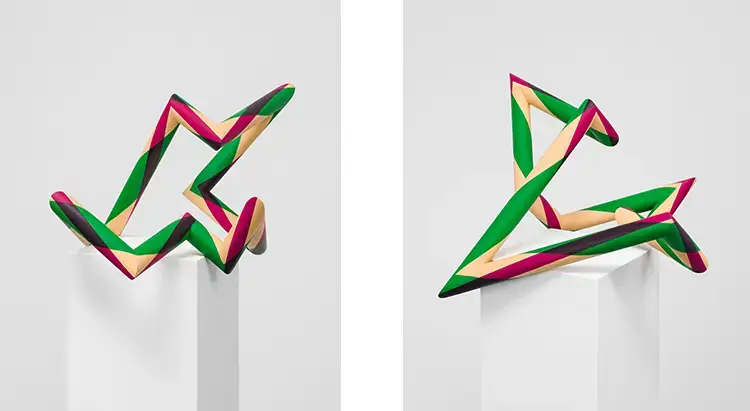
Christopher Sage: Echoes of Influence and Playful Projections
The evolution of Sage’s visual language has been shaped by a lineage of artists who share his commitment to experimentation and complexity. Josef Albers holds a central place in this pantheon, particularly for his exploration of color theory and spatial perception. Albers’ “Structural Constellations” captivated Sage during his formative years and later informed his own “Glyphic” series, where abstracted letterforms interrogate both language and geometry. Similarly, the analytical precision of Sol LeWitt and Max Bill introduced Sage to the possibilities of mathematical logic in artmaking—a foundational influence that continues to resonate through his use of prime numbers.
Jasper Johns’ meditative engagement with cultural symbols and Patrick Caulfield’s stylized manipulation of space also left lasting marks. Johns’ ability to extract nuance from everyday imagery inspired Sage to rethink familiar forms, while Caulfield’s flat yet suggestive compositions expanded Sage’s understanding of spatial illusion. More recently, the meticulous works of Tomma Abts have struck a chord. Her reconsideration of hard-edge painting and embrace of small scale has informed Sage’s sensitivity to surface and viewer intimacy. Abts’ layering techniques, in particular, echo in the visible palimpsests of Sage’s own paintings, where histories of mark-making emerge subtly from beneath the final image.
Looking ahead, Sage is drawn to the notion of interactivity in sculpture on a grand scale. He envisions inflatable structures that engage audiences not only visually but physically and emotionally. Inspired by the transformative joy adults display around inflatable playgrounds, he sees potential for large-scale sculptures to evoke similar responses in art contexts. These projects aim to blur the boundary between observer and participant, encouraging a return to wonder and play. These works would inhabit space in a different way—no longer perched on plinths or isolated by gallery walls, but expanding and contracting within architecture, reshaped by the very environments they occupy and the bodies that explore them.
